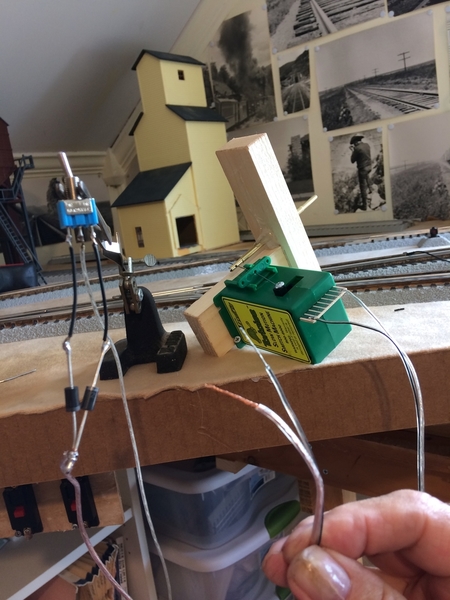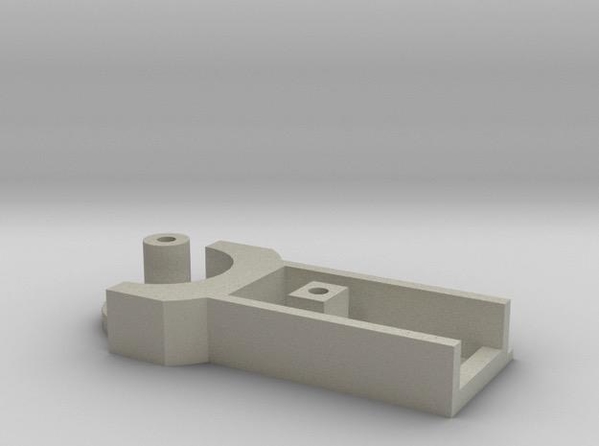I thought someone might find use for a gadget I developed so I’ll describe it and put up some PICs.
First a little background. After running Lionel PWC NW2s the Plywood Empire Route recently acquired a couple MTH PS3 SW1500s and a new era has begun. With speed control these engines make switching moves at a [scale] walking speed. Unfortunately Lionel “claw” couplers require a lot of force to couple so more like an Olympic sprinter’s speed is needed thus defeating the realism of slow-speed switching. A switch to Kadee couplers would solve the problem BUT the only space available for a return loop/interchange track/fiddle yard requires an O31 circle so truck-mounted couplers must be used and no one yet offers a way to mount Kadees on MTH freight trucks. So I’m stuck with crash-coupling claws. What is needed is brakes on standing cars so I assembled and installed several such devices.
The basic bit is a Circuitron Tortoise slow-motion switch machine usually seen on HO pikes. It actuates a 5/32" brass tube which is fitted inside a larger 3/16" piece of tubing. The 3/16" tube is friction-fitted and hot glued and the whole assembly is attached to the underside of the plywood decking. Installed in the roadbed adjacent to an electromagnetic uncoupler it looks like this:
Seen here in the lowered position.
And here in the raised position.
Here it is seen in position to stop a car from moving while a car comes from the left and pushes the coupler slowly closed until it locks. No more crashing cars together! Switching is now much more like the real thing on the Plywood Empire Route.
Video of the gadget at work:
Lew




































